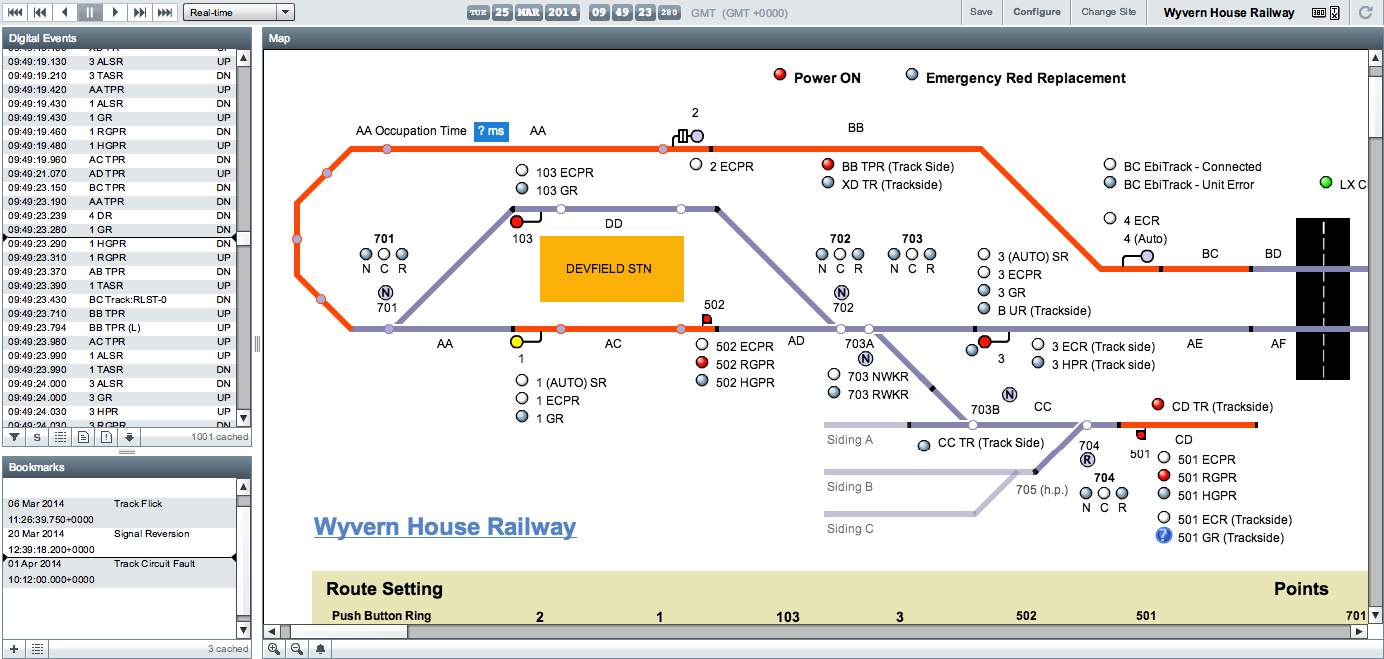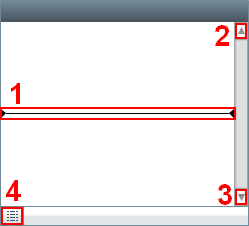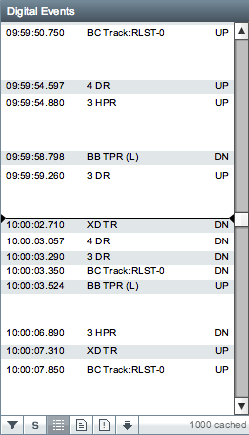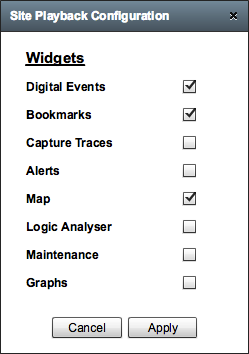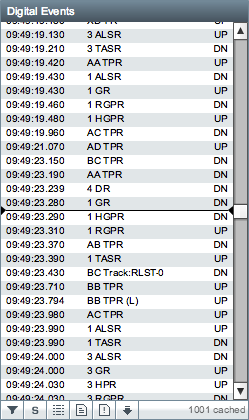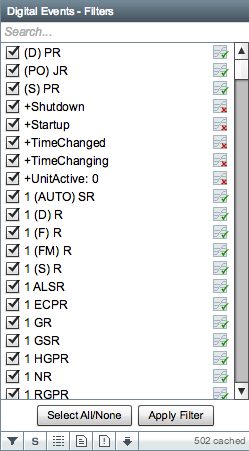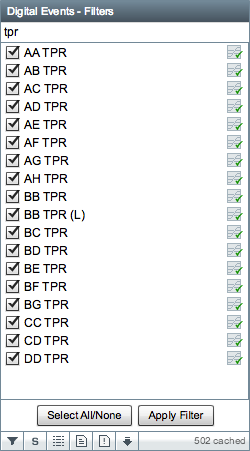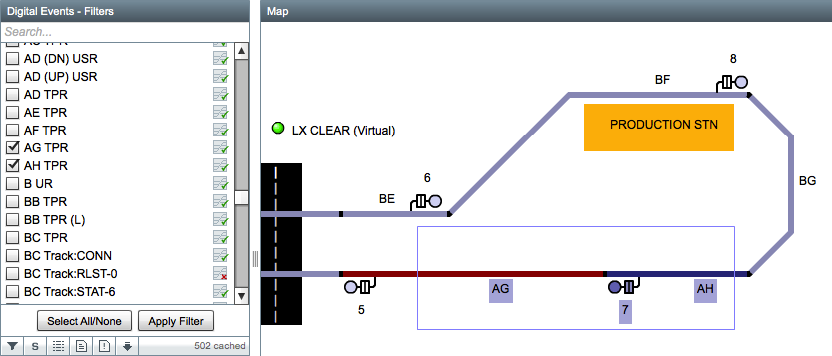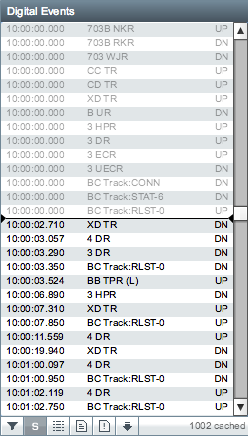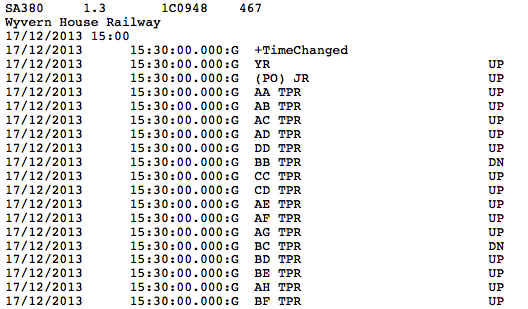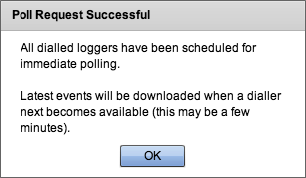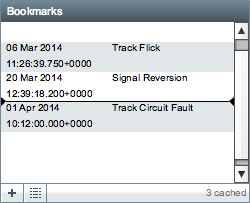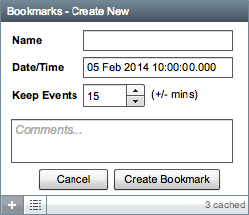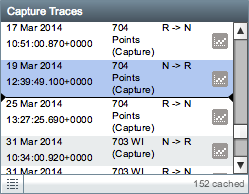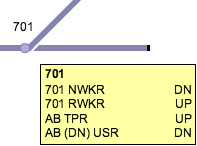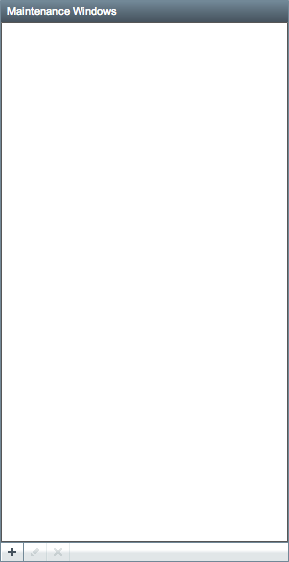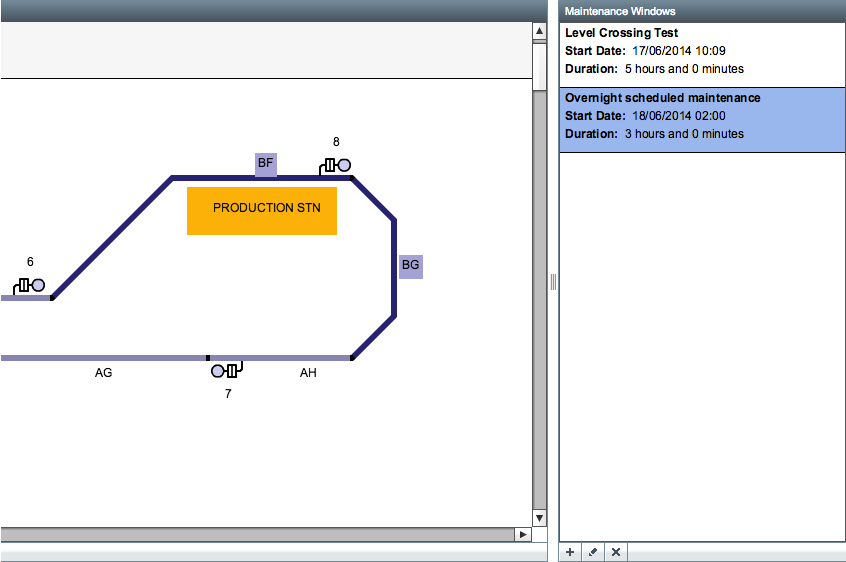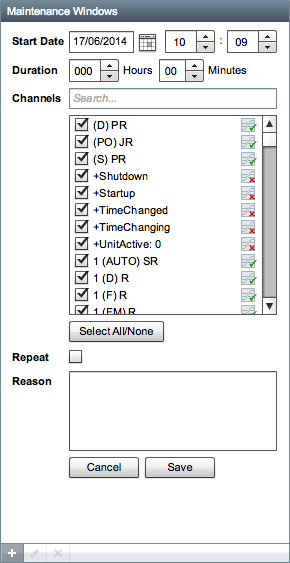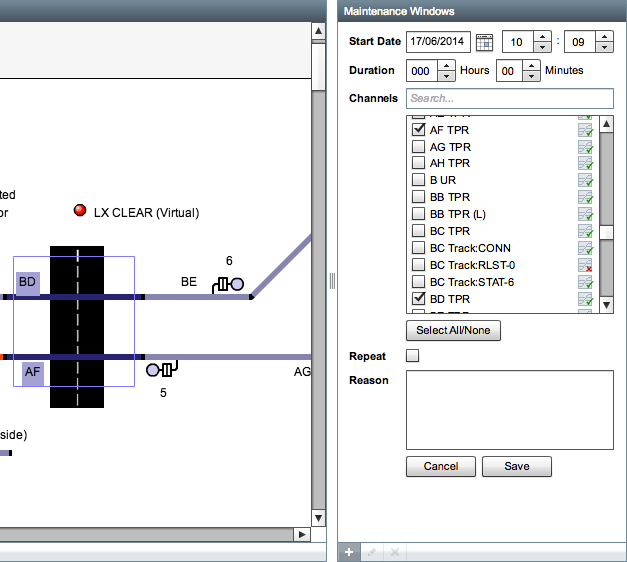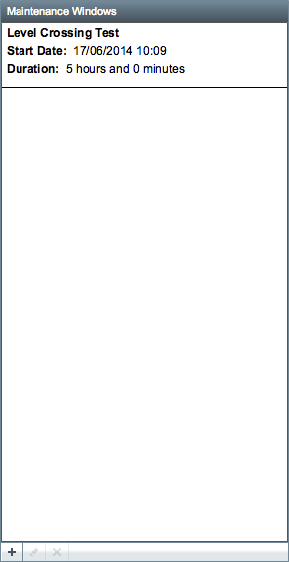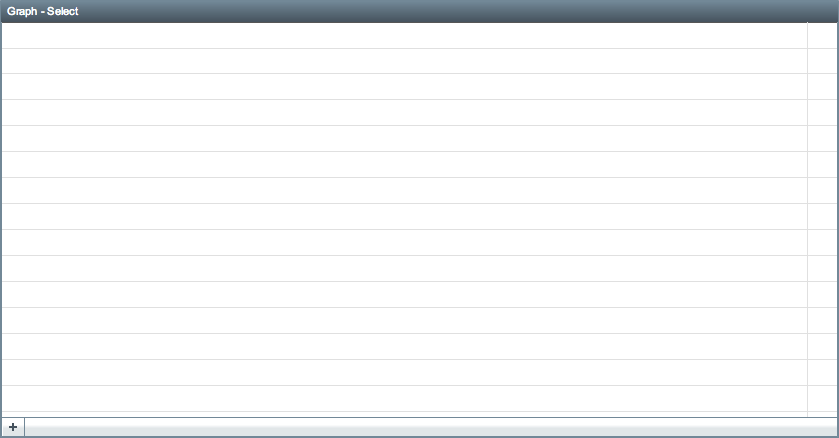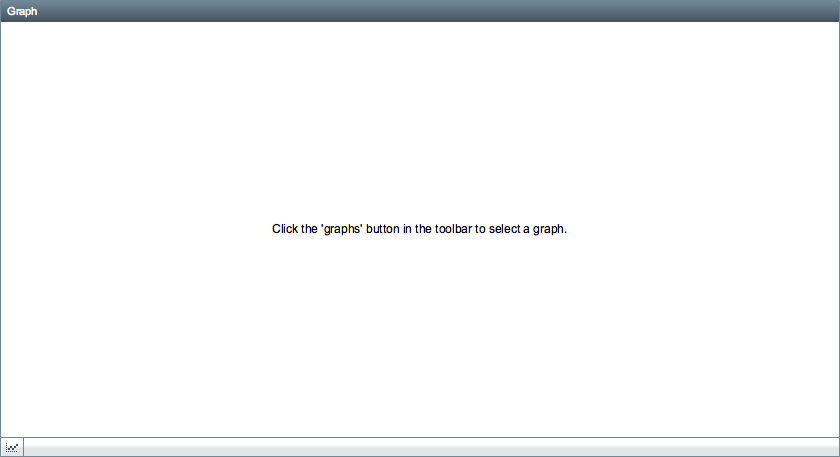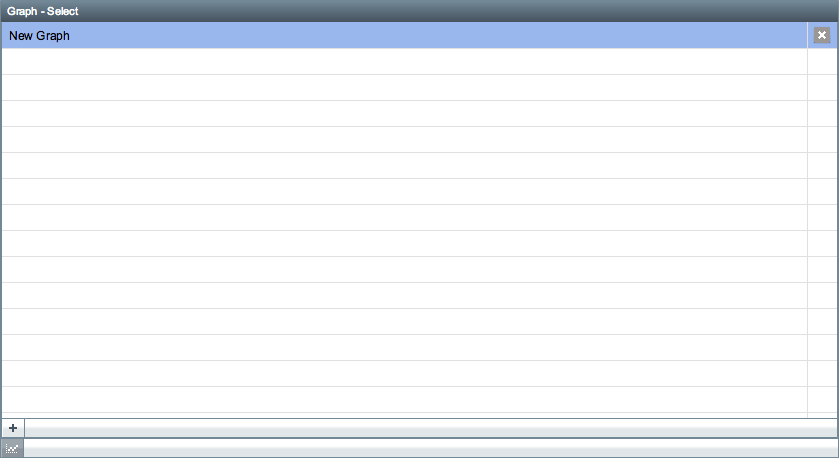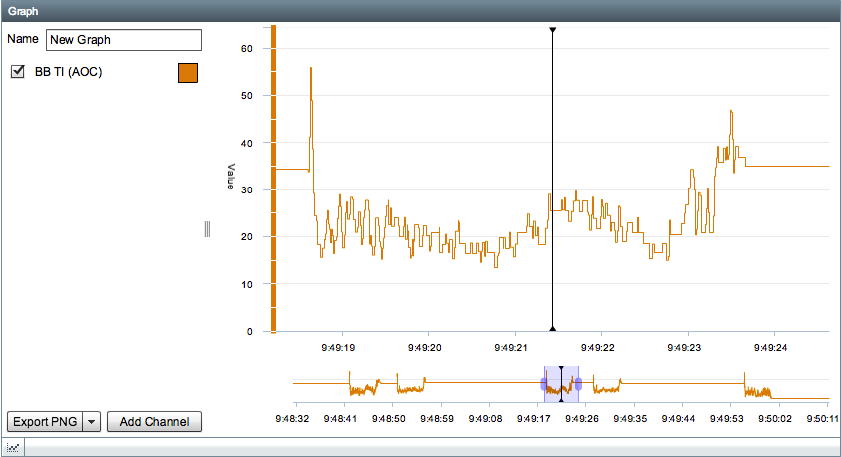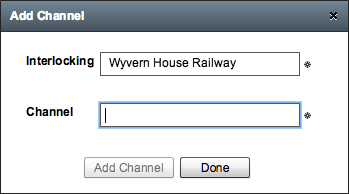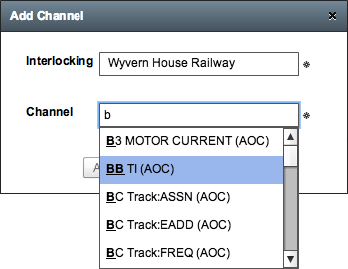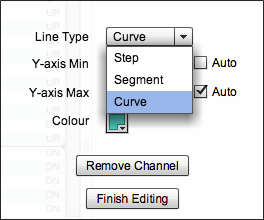Overview
Keyboard Shortcuts
There are several different keyboard shortcuts which are useful during playback. Ensure that you have first clicked on the widget you wish to control before using the keyboard shortcuts.
- Up (↑) and Down (↓) arrow keys - step backward and forwards through items in widgets or scrolls the up left and down.
- Left (←) and Right (→) arrow keys - adjusts the spacing between items in widgets that are in "Time Spaced Mode" or scrolls the map left and right.
- Page Up and Page Down keys - steps backwards and forwards through items in widgets a page at a time.
- Spacebar key + Left Mouse Click - this turns the cursor into a hand () which can be used to pan the map when you click and drag the mouse cursor on the map.
- + and - keys - zoom in and out the map view.
- Ctrl + Mouse Wheel (Cmd + Mouse Wheel on OS X) - zoom in and out the map view.
- 0 key - reset the zoom level to 100%.
Time Driven Lists
Several of the widgets make use of a standard control known as the time driven list. This control is used to display a list of time series data and can be used to move time backwards and forwards in playback.
- Current time cursor - this line indicates the current time based on the playback time.
- Scroll up button - moves backwards through the items in the list, altering the playback time based on the item time.
- Scroll down button - moves forwards through the items in the list, altering the playback time based on the item time.
- Enable Time Spaced Mode button (see below).
Enable Time Spaced Mode
Pressing the enable time spaced mode button will cause the items in the list to be separated by vertical space which is proportional to the amount of time between them.
This feature can be useful when identifying items which occurred around the same time as each other. As mentioned in the keyboard shortcuts section, the Left (←) and Right (→) arrow keys can be used to increase and decrease the space between items. Below is an example of the time spaced mode in operation on the digital events widget.
Widgets
By default, the Digital Events, Bookmarks and Map widgets are visible on a new site until it has been customised by the user. To customise the visible widgets, click the Configure button in the top right of the playback screen.
You should see a dialog appear in the centre of the screen with a list of checkboxes which allow you to enable and disable the various widgets. Once you have selected the required widgets press the Apply button and the playback screen will reconfigure. Pressing Cancel will dismiss the dialog without making any changes.
The new configuration will only remain until you change site or logout, it is also not visible to other users. You can save the configuration by pressing the Save button in the top right of the playback screen, this will make it visible to all users who have access to the site.
Digital Events
The digital event widget contains all digital event information, this may be from an hour file or other sources.
The toolbar below the list of digital events contains several buttons:
- Filter Channels
- Show Initial States
- Enable Time Spaced Mode
- View Original Hour (Events) File
- View Original System Log File
- Pull Latest Events From Logger
Filter Channels
Pressing the filter channels button will cause the list of events to disappear and a list of channels will be presented.
The list contains every channel that has been configured on the current site in alphabetical order. The checkbox allows you to select and deselect channels for inclusion in the events list. Pressing the Select All/None button will cause all channels that are currently in the list to either be selected or deselected. The small map icon to the right of the channel name in the list indicates if there is a graphical object on the map which is making of use of this channel, a green tick indicates there is and the red cross indicates that there isn't. Pressing the Apply Filter button will reload the events list with only the events for channels you have selected.
There is a text box at the top of the channels list which can be used to search the list, the search will match any part of the channel name and is case insensitive.
If the map widget is available then it can also be used to filter the list of channels, simply drag a selection around the objects on the map that you're interested in and you should see the channels in the list get selected automatically.
Show Initial States
Pressing the show initial states button will cause the list of events to be reloaded with the addition of the initial state events.
Initial state events are events which do not represent a transition (eg: UP to DOWN) but instead reflect the current state of a channel. There are various sources of initial state events but they are typically found on the hour on sites which have an SA380 logger associated with them. They are shown in the events list in grey to distinguish them from normal transition events. When the list cursor moves over a state event it will not typically trigger any changes on the map if it is visible because the state event should match the current state of the channel.
View Original Hour (Events) File
Pressing the view original hour (events) file button will open up a new window in your web browser with the original hour file which the digital event data came from.
The original hour file is displayed as raw text in the browser and can be saved for offline viewing.
The original hour files are only available for sites with an SA380 or SA380 TX logger which has been configured to download hour files.
View Original System Log File
Pressing the view original system log file button will open up a new window in your web browser with the original system log file for the logger.
The original system log file is displayed as raw text in the browser and can be saved for offline viewing.
The original system log files are only available for sites with an SA380 or SA380 TX logger which has been configured to download system log files.
Pull Latest Events From Logger
Pressing the pull latest events from logger button will schedule an immediate call to download the latest hour fire and system log file when a dialler becomes available.
A confirmation message will be displayed indicating that a call has been scheduled.
This feature is only available on sites with an SA380 or SA380 TX logger which is configured to be dialled.
Bookmarks
The bookmarks widget displays a list of bookmarks
The toolbar below the list of bookmarks contains several buttons:
Create Bookmark
Pressing the create bookmark button will change the bookmark widget into the create bookmark view.
- Name - the name of the bookmark (eg: T19 Track Flick).
- Date/Time - the date and time of the bookmark.
- Keep Events - a time window either side of the Date/Time to keep events. During routine archiving of historical Centrix data, any bookmarks will be inspected and events that fall within the specified window will not be archived.
- Comments - a comment explaining in more detail the purpose of the bookmark.
Pressing the Create Bookmark button will create a new bookmark, pressing Cancel at any time will return you to the bookmarks view.
Capture Traces
The capture traces widget displays a list of capture traces. Clicking on the graph button next to the capture trace will open up the Captures module and display the selected graph.
For more information, see Captures.
Alerts
The alerts widget displays a list of alert raises. Clicking on the clock button next to the alert raise will open up a dialog which shows a list of historical alert raises for the selected alert.
For more information, see Alerts.
Map
If a map has been designed for a site (using the Map Designer) then it will be visible in the Map widget.
If you hover over an object on the map you will see a tooltip box appear nearby. The tooltip contains the name of the object in bold text along with a list of channels associated with the object and their current state (UP, DN or ?).
The toolbar below the map contains several buttons:
- Zoom In
- Zoom Out
- Show/Hide Alert Icons
Show/Hide Alert Icons
The show/hide alert icons button toggles the visibility of any alert icons on the map. When the button is not in the highlighted state, alerts will not be shown on the map.
When the button is in the highlighted state, the alerts will be shown on the map.
The alerts appear on the map as a flashing red bell icon. They will appear when an alert has been setup on the current site and it has been activated. The alert icon will appear near any objects on the map which share channels with the configured alert. For example, a Track Flick alert setup on track circuit BE will show the icon on the map by the BE track circuit object when triggered.
Logic Analyser
The logic analyser starts out without any channels configured on it, if you click on the "Edit Channels" button in the bottom left corner you will be taken to a screen where you can configure the channels.
A list of of all available channels is displayed, the logic analyser can only display digital channel data. To add a channel to the logic analyser, first find it in the list or type in the text field at the top of the list to filter it. Once you have located the channel you want to add, click on it to highlight it and then press the right arrow button (→). You can add up to 10 channels and channels may be removed by highlighting them in the "Active Channels" list and pressing the left arrow button (←). Once you have finished adding the required channels, click the "Edit Channels" button in the bottom right corner again to return to the main logic analyser view.
- Scale - The first slider at the bottom of the logic analyser can be used to adjust the time scale on the x-axis. By dragging the slider to the right you can increase the amount of time represented by each pixel, this allows you to expand the timeframe visible in the logic analyser. The millisecond values either side of the centre line indicate the current size of the timeframe and change in relation to the position of the slider.
- Line Thickness - the second slider is used to adjust the thickness of the line drawn on the logic analyser, this may make it more visible.
Maintenance Windows
Graphs
